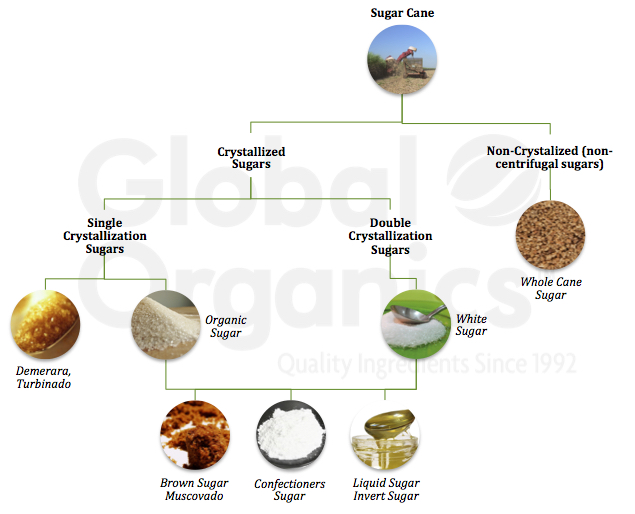Budget Friendly Cane Sugar Processing Chemicals: Boost Performance
Budget Friendly Cane Sugar Processing Chemicals: Boost Performance
Blog Article
Maximizar Rendimientos Y Minimizar Costos: Estrategias Avanzadas Para La Optimización Química Del Procesamiento De Azúcar De Caña
In the realm of walking cane sugar processing, the search of making best use of returns while concurrently lessening prices stands as an awesome obstacle that needs a strategic blend of sophisticated chemical optimization techniques. The intricacies of this undertaking look into the core of efficiency, where every element of the procedure plays a critical role in attaining optimum end results. By checking out the intricacies of chemical evaluation, enzyme use, pH control, filtering, and distillation methods, a landscape abundant with possibilities for enhancement and advancement emerges. Among this elaborate web of strategies exists the assurance of opening untapped capacity and transforming the very essence of sugar manufacturing. Cane Sugar Processing Chemicals.
Chemical Evaluation for Effectiveness
Chemical evaluation plays a critical function in improving the effectiveness of sugar cane handling by giving crucial insights into the composition and residential properties of the raw products. By carrying out thorough chemical analyses on sugar cane samples, processors can establish the exact focus of sucrose, glucose, fructose, and various other components present in the raw material. This details is vital for maximizing the different stages of the sugar walking stick processing chain, from milling to condensation.
Furthermore, chemical evaluation enables cpus to identify impurities such as natural acids, healthy proteins, and minerals that can impact the quality and return of the final sugar product. By measuring these pollutants, cpus can implement targeted approaches to eliminate or alleviate their impacts, eventually improving the overall performance of the handling plant.
Furthermore, chemical analysis helps with the tracking of procedure parameters such as pH, temperature level, and viscosity, allowing processors to make real-time changes to make sure optimum problems for sugar removal and condensation. Overall, a comprehensive understanding of the chemical structure of sugar walking stick is essential for taking full advantage of yields, reducing expenses, and maintaining high item top quality in the sugar production sector.

Enzyme Use for Enhanced Yields
With a tactical technique to enzyme use, sugar walking stick processors can substantially improve their returns while preserving operational efficiency in the production procedure. Enzymes play a vital duty in sugar walking cane handling by damaging down complex carbohydrates right into simpler sugars, hence raising the general sugar extraction efficiency. By incorporating particular enzymes tailored to target the different parts of sugar walking stick, such as cellulose and hemicellulose, cpus can boost the release of sugars throughout extraction.
Enzyme application supplies the advantage of maximizing sugar returns from the raw product while minimizing the power and resources needed for processing. Via mindful choice and application of enzymes, sugar cane processors can enhance their operations to accomplish greater returns and productivity.
Ph Control for Ideal Processing
Enzyme use for boosted yields in sugar walking stick processing lays the structure for resolving the critical aspect of pH control for ideal handling efficiency. Preserving the suitable pH level throughout numerous stages of sugar cane processing is vital for making best use of yields and lessening prices. pH control is particularly critical throughout the extraction and explanation procedures. In the extraction phase, maintaining the proper pH aids in attaining efficient sucrose removal from the cane. Managing the pH during explanation help in the rainfall of impurities and non-sucrose parts, leading to hop over to these guys a purer final item. In addition, pH affects the activity of enzymes entailed in the malfunction of macromolecules, impacting the total efficiency of the process. By meticulously keeping an eye on and adjusting the pH degrees at various handling steps, sugar walking stick cpus can enhance sugar recovery rates, minimize chemical use, and enhance the total manufacturing process. Reliable pH control not only enhances the top quality of the end product yet also adds to lasting and affordable sugar walking cane handling procedures.
Advanced Filtration Methods
Implementing advanced filtering methods in sugar cane handling enhances the efficiency and purity of the click here for more end product with refined separation techniques. By including innovative purification innovations, such as membrane layer purification and turned on carbon filtration, sugar cane handling plants can accomplish greater degrees of sugar recuperation and improved top quality control.

Turned on carbon purification is an additional sophisticated strategy that aids in the elimination of colorants, off-flavors, and recurring impurities from sugar walking cane products. By utilizing triggered carbon's adsorption homes, this filtering approach improves the clearness and preference of the sugar, meeting the high criteria required by customers and sector policies.
Energy-Efficient Purification Techniques
Energy-efficient purification techniques are necessary for optimizing the sugar walking stick handling industry's energy intake while keeping high-grade item standards. Conventional distillation processes can be energy-intensive, leading to greater production expenses and ecological influences (Cane Sugar Processing Chemicals). Carrying out energy-efficient distillation approaches, such as vacuum cleaner purification or molecular distillation, can considerably minimize energy requirements while improving overall process efficiency
Vacuum distillation involves decreasing the pressure within the purification system, which reduces the boiling factor of the fluid combination being refined. This decrease in boiling factor reduces you can try here the energy required for evaporation, leading to energy financial savings contrasted to standard purification techniques.
On the various other hand, molecular purification makes use of short course distillation techniques under high vacuum problems to separate substances based on their molecular weight. This approach is particularly efficient for heat-sensitive compounds, as it operates at reduced temperature levels, minimizing energy consumption and protecting product high quality.
Verdict

Report this page